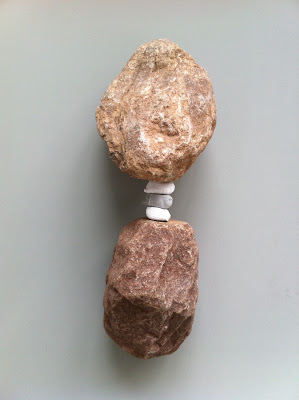lluminations, the official title for the 54th Biennale di Venezia came to a close November 27th, 2011. Organized by Bice Curiger, the exhibit has been praised and faulted and as a culmination to the previous texts and images in print and online, I’ve decided to post my personal favorites. I wrote about
Thomas Hirschhorn, who represented the Swiss Pavilion and now am featuring other artist works that strive to make a mark within the realm of contemporary art and succeed.

Urs Fischer’s Untitled work in the central location of the long stretch of galleries in the Arsenale is a perfect example of new work for an exhibition that is supposed to be a representation of the best art on an International level. Urs Fischer models his sculpture after The Rape of the Sabine Women located in the Piazza Signoria, Florence and then following suit to his previous wax works, lights the wick and allows the piece to burn for the duration of the exhibition. It was both poignant as a reflection of a temporary exhibit and also an interesting approach to mirroring the culture and/or historical importance and resonance of the country. As many things as meant to fade, Urs Fischer doesn’t leave much to chance and takes initiative whereas the piece isn’t complete until its been melted.

Inside the pavilion of Austria was artist Markus Schinwald. Curated by Eva Schlegel, the artist presented paintings and a projected video. The interior space of the pavilion was divided into two almost identical sides along with maze-like walkways. In between the white walls were paintings, found oils on canvas, the artist reworked each image adding delicately surreal facial accouterments. The paintings are extremely eerie and otherworldly in their representation of what appear to be scientific devices or medical jewelry to both beautify and heal the sitters ailment. I was transfixed and even more so by the video that was projected in a large room at the end of the maze. Schinwald taps into the psychology of humanity focusing on anxiety, loneliness and the ridiculousness of beautification and masquerade by means of projection and paint.
Gabriel Kuri, Three Arrested Clouds, 2010 Location: Central Pavilion, Giardini
On the occasion of the Biennale, Mexican-born, Belgium based artist Gabriel Kuri presented a series of sculptures. Three Arrested Clouds, combined a ridiculousness with a magical quality that is what art is all about; guessing. The sculpture, mounted on the wall, is both authoritative and witty without being too much of one and not enough of the other. The piece rests its own sense of motivation and purpose on the shoulders of the viewer and still finds a way to be quite gratifying, even in its form of obscurity.
(A Church of Fear vs. the Alien Within), detail, 2010 (install 2011) German Pavilion Location: Giardini
Christoph Schlingensief was chosen to represent the German Pavilion for the 54th Biennale di Venezia. His piece
Eine Kirche der Angst vor dem Fremden in mir (A Church of Fear vs. the Alien Within), had been installed within the completely transformed interior of the otherwise architecturally rigid pavilion. The stage installation was also granted the Golden Lion for best pavilion in the exhibition and it was well deserved. As a dire meditation,
Eine Kirche der Angst vor dem Fremden in mir is a man’s own realization, recognition and visual amends in preparation of his own death. Sadly, Schlingensief passed away in 2010 at the age of 50 after a long battle with lung cancer, before seeing the piece fully realized. The installation at the German Pavilion, along with screenings of the artists films and the documentation of his ambitious
Opera Village in the African country Burkina Faso, all focused on the potency of art production as means of survival, even in the face of death.
(short video made with iPhone 4)
The pavilion that had the most buzz, literally, at the opening of the Biennale in June 2011 was the American Pavilion and the work of Allora & Calzadilla. The art duo, known for turning heads and provoking reaction along with curiosity and inquiry presented several sculptural installations, including
Track and Field, a full size army tank, flipped on its back, its wheels doubling as the motor for a treadmill. I read much of the backlash and appreciation for the piece opening weekend and wrote
my own response in a blog entry from June 3rd, 2011. Its wheels, it was said, could be heard throughout the large, lush outdoor venue. Upon arrival to the Giardini, I listened intently to the crunch of pebbles under the weight of my boots, as I strained to also hear the piece and sure enough its audio was the dominate sound of the exhibition. However in all of the criticism that surrounded
Gloria, I actually found the works as a whole to be amusing, a bit of an extension of the middle finger, but also an accurate, even if exaggerated interpretation of America as perceived by many at home and abroad.

Cafeteria, Interior view, Central Pavilion, Location: I Giardini
Lastly, I have to mention the cafeteria inside the Central Pavilion located at the Giardini. Somehow and quite shockingly, it channeled quite precisely the popular 1990’s t.v. sitcom
Saved by the Bell but of course served a variety of panini and my favorite the spritz con Aperol.
Until 2013!
More soon
xo






